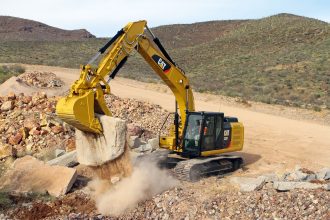The uninitiated to the world of towing will read that title and immediately think that all that’s required is to hitch up whatever it is you need to pull, and away you go. However, those of us who know understand that this attitude will inevitably lead to anything from minor damage to whatever you’re towing to getting loose and wreaking havoc while you’re on the freeway. Towing has a little more nuance than most folks give it credit for, and this post is designed to turn the uninitiated into the initiated and get them ready to tow almost anything that their vehicles are capable of.
Consider Weight Limits And Distribution
How much you plan on towing and how it’s distributed around the trailer are perhaps the most crucial elements when it comes to safe towing. If in any doubt, you can refer to any online towing capacity guide that should give you the guidelines for your particular vehicle, otherwise, you should be able to find it in your handbook. The towing capacity of your car will dictate how much it can safely tow, and if you go over these limits, you risk not only damaging your vehicle but also putting every other road user in danger. When it comes to distribution, you can usually refer to your trailer guidelines and see what they recommend. However, as a general rule of thumb, 60% of the weight should be in front of the trailer’s axle centerline and 40% behind.
Secure Cargo With Proper Straps
Weight and distribution aren’t the only names in town when it comes to effective towing, and making an effort to secure your cargo down correctly will keep it from moving around and causing damage to your vehicle and whatever it is you’re transporting. You can easily find a huge range of straps when you search online, but this is something you should really spend a bit of money on and avoid opting for the cheapest option. You need straps that have enough give in them to be able to cinch them down tightly but still allow for a slight movement, but strong enough to stay in place when things get a little rough.
Use Safety Chains For Trailers
No matter what claims the trailer manufacturer makes about the robustness of their product, you should always be prepared for any eventuality. Just as two things are one and one is none, so too should you take this attitude when hauling anything around using your vehicle. In practice, this means attaching safety chains alongside whatever attachment is required to connect it to your car so that if one fails, you have redundancy that will, at the very least, allow you to get off the road safely and without endangering other road users.
Check Tire Pressure And Condition
As should be the case with your standard pre-trip inspections, you should always check the tires on both the towing vehicle and trailer to make sure they have enough tread and air and are otherwise roadworthy. The amount of PSI you will need to fill your tires with will depend on how much weight you are hauling, which is something you should already know. You can check yourself or, if you aren’t entirely au fait with tire pressures, have your local mechanic check them for you. If you notice any signs of wear and tear, you really should change the tires for new ones. A little investment ahead of time can go a long way in making your trip a safe one.
Plan Breaks For Long Journeys
Hauling any sort of trailer, whether it be your boat or a trailer full of lumber, requires more concentration than you might think. If your journey is going to be a long one, it can pay to plan out a few rest stops along the route. While you probably want to make good time and not spend too much time hanging around, the longer you drive without rest, the more susceptible you become to having an accident. And, with the addition of a large trailer hanging off the back of your vehicle, you will need to take extra caution to drive responsibly and keep your car on the road.
Be Aware Of Larger Than Usual Blind Spots
Towing anything off the back of your car will ultimately result in dramatically increased blind spots. This only gets worse the longer the thing you’re towing is, as it will obstruct your view from behind. Consequently, you must heed your blind spots even more cautiously than you might otherwise to ensure that there are no other road users trying to overtake you (which they almost always will be trying to).
SAafe towing begins with a bit of understanding of what you’re towing, its weight, and how to place it correctly to ensure a smooth ride. Most of this information can be found online, but when it comes down to it, proper planning and an increase in caution are what it takes to move things around safely.













